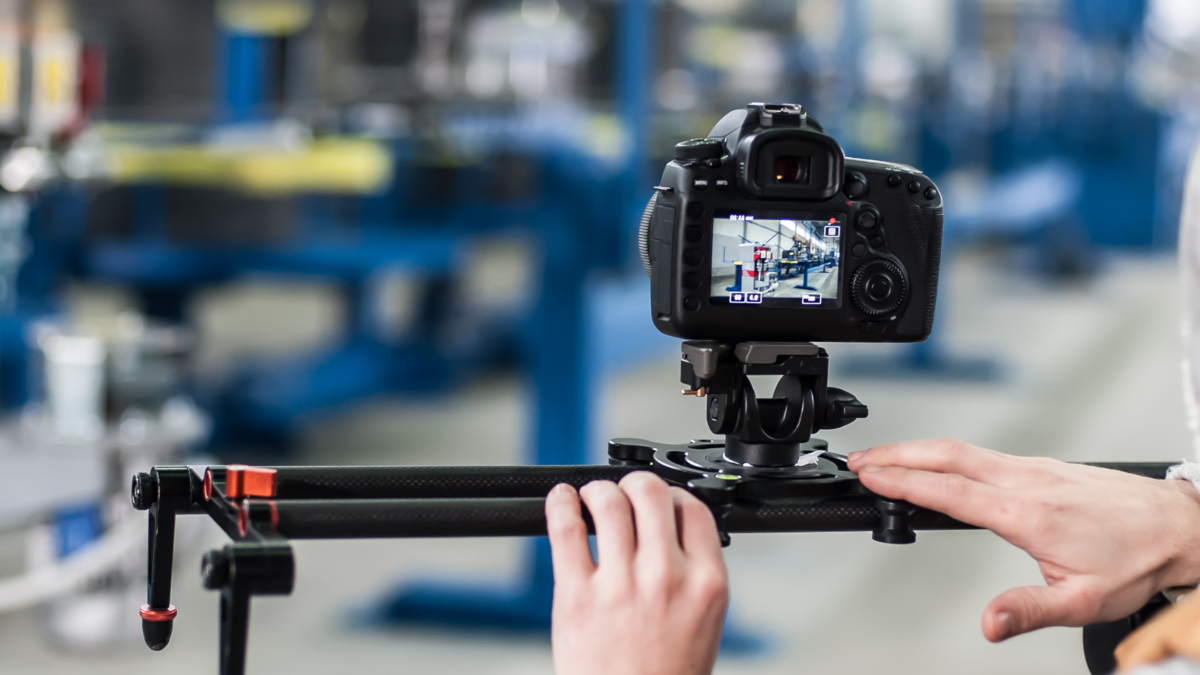"Then we'll just film the whole thing". After the process of elimination, this solution emerged as the last option for our project team, whereby we were able to achieve our goal. Complex products in specialised machine construction, spatial distance to the products, subject matter experts who were very short on time for research, and the quest to reproduce even small details correctly were the background for our decision.
Our preliminary considerations
First of all, we realised that we'd have people in front of us, and some of whom would probably not enjoy being filmed. So we talked to the contact people before the video recording sessions and made it clear that we'd be filming the machines and not the people. During the video sessions we always tried to keep our promise. If the person felt that he or she had expressed himself or herself in an unfavourable way, then we redid the shoots upon request.
Positive experiences – learned the hard way
On a positive note, it's very clear that complex action sequences can be filmed and "put in the can" pretty easily. In addition to the video shoots, which demonstrated the functionality of the machines very accurately, the soundtracks also proved to be invaluable. Not only were the Engineers' explanations easy to hear, but also were the clicking and hissing sounds of a pressure valve releasing. All this contributed enormously to the understanding of both product and its related processes. The data was available and could also be viewed by various Technical Editors. Actually being at the machine was usually no longer necessary for the subsequent technical editorial work.
The other side of the coin was that, as a first step, our IT infrastructure had to be adapted to the larger data volumes. Compared with purely photo-based research, these volumes were estimated to be between 10 and 15 times bigger. The time needed to evaluate the video, in addition, mustn't be underestimated. Conscientious evaluation requires a multiple of the videos' running times. Filming longer processes sometimes had the consequence that the names of the videos weren't long enough to summarise their content. Separate Tables of Contents therefore had to be created in some cases, which meant additional effort. In addition, the video quality was often insufficient to include individual frames of acceptable quality in the operating instructions. Separately created photos were therefore still indispensable. Last but not least, it turned out that the Engineers, as subject matter experts, were less talkative during the various research situations whilst on camera than during open conversation, despite all their best efforts. We also had to learn that video cameras exhaust their battery capacity much faster than cameras in "photo" mode.
Lessons learned
Looking back on it, we would have probably done many things in a very similar way. In my opinion, especially the "getting it" of the subject matter experts and the respect for their sensitivities was the inspiration for the success of our video-based research. Now that we have a better hang for the actual storage space requirements, we'd probably design other storage and backup solutions. We'd also probably try to create shorter video sequences with a maximum filming length of between 4 and 5 minutes. Based on the experience that we often had to take photos in a second go, we'd now place an ActionCam on the camera's hot shoe, in order to replace the video camera.
Our conclusion: We can recommend video-based research – well prepared for and used correctly – to any Technical Editor for their research. Videos are sometimes just pictures with an additional 1000 words.

